
The device is mainly about three parts: Injection, pushing and stacking. Through precise servo control and intelligent operation system, the molding press can complete fully automated operations from injection to finished product stacking, helping enterprises improve efficiency, reduce manual operations and ensure product quality.
This equipment is mainly divided into three core parts: material injection, material ejection, and stacking. Through precise servo control and an intelligent operating system, the molding press can complete the entire automation process from material injection to finished product stacking, helping enterprises increase production efficiency, reduce manual operations, and ensure product quality.
Introduction
01 Solutions
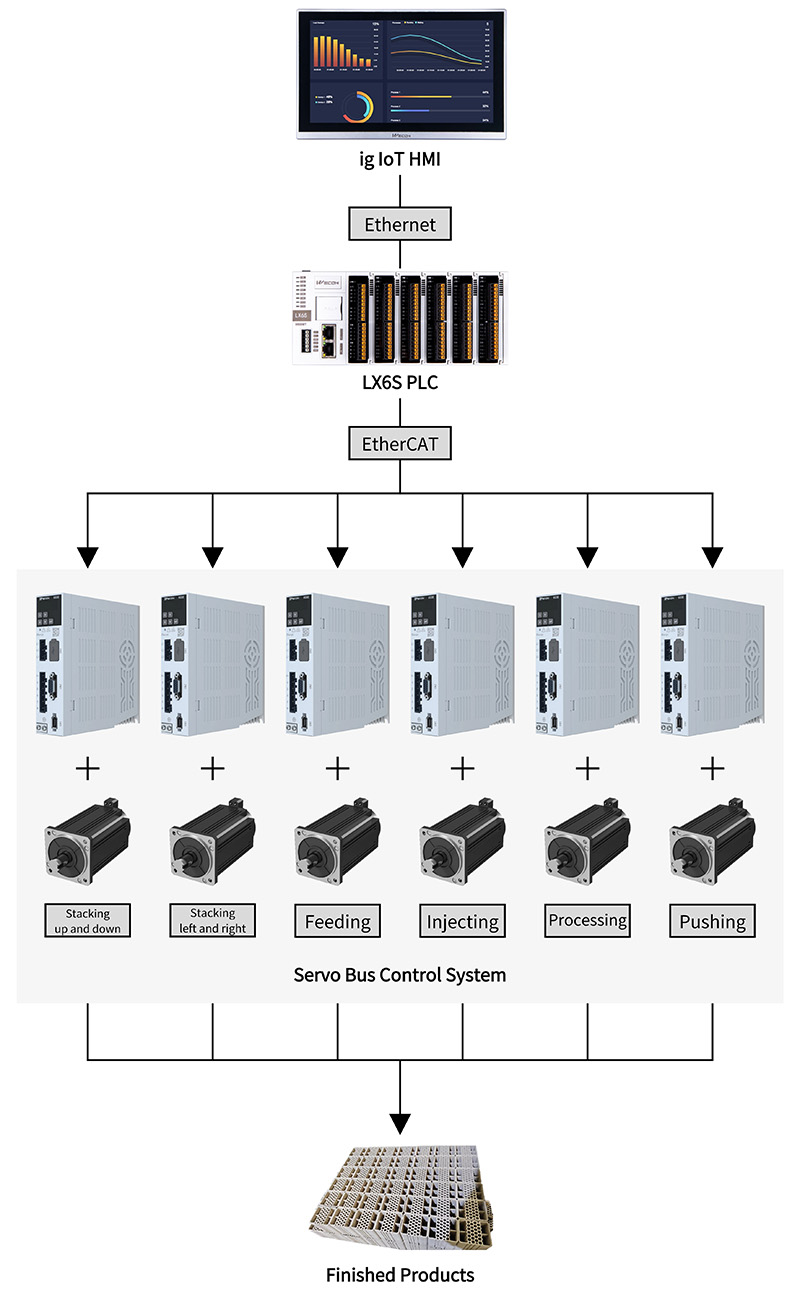
02 Molding machine process
1.Material injection
According to the set hole position of the mechanism, the injection process moves through the front and rear servo control and the left and right servo cooperation of the receiving tray to ensure the accurate injection amount of each hole.
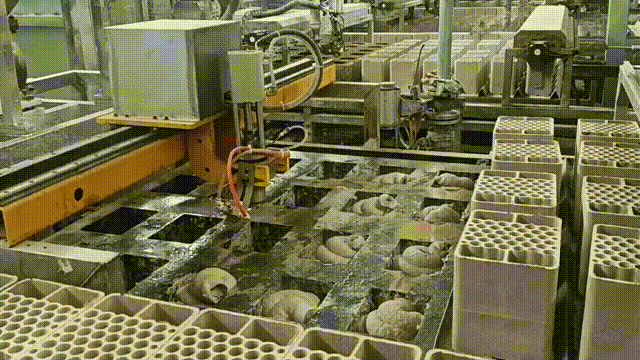
2. Material receiving and loading
After the injection of material is completed, the material receiving tray moves to the position beneath the molding press to catch the material that has been pressed and formed in the previous cycle. Then, the bottom door is opened, allowing the mud material to fall into the holes of the molding press. Finally, the material receiving tray returns to its injection position to commence the next round of material injection.
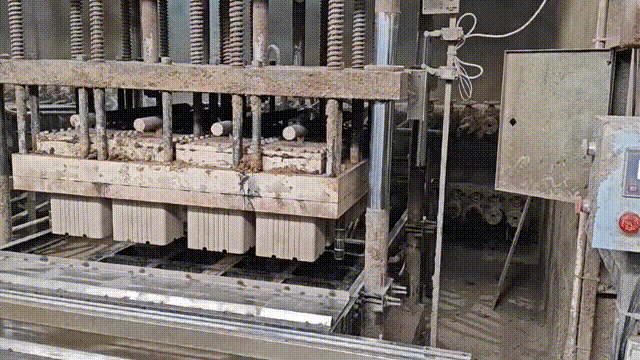
3. Pressing material
The mold press is lowered to press the material, and after the material pressing is completed, it waits for the material receiving tray to receive and blank.
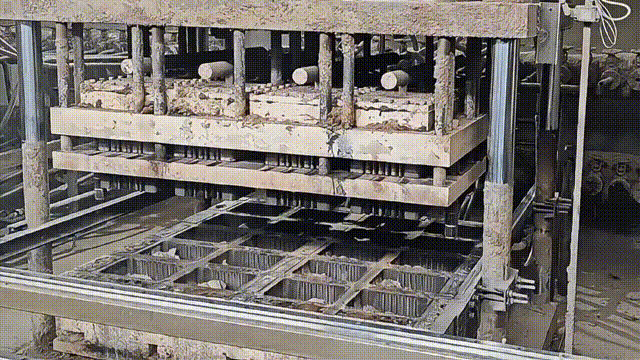
4. Pushing material
The receiving tray transports the finished product back to the initial position, and the pushing system pushes the finished product to the stacking part according to the set mode until all the finished products on the receiving tray are pushed.
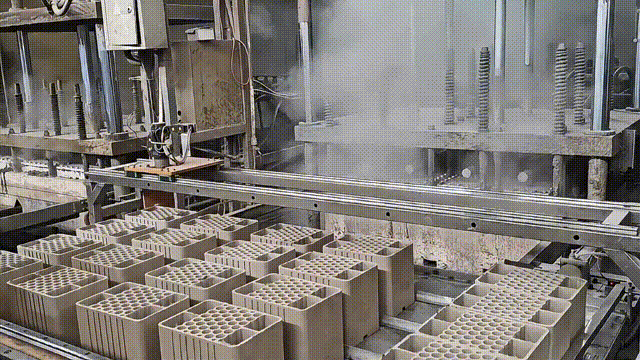
5. Stacking
When the finished product reaches the stacking position, the stacking axis clamps the finished product, rises and translates to the corresponding number of columns, and then lowers and places it to the specified number of layers. This cycle continues until the set number of layers and columns is completed, and the equipment prompts the worker to move away the finished product.
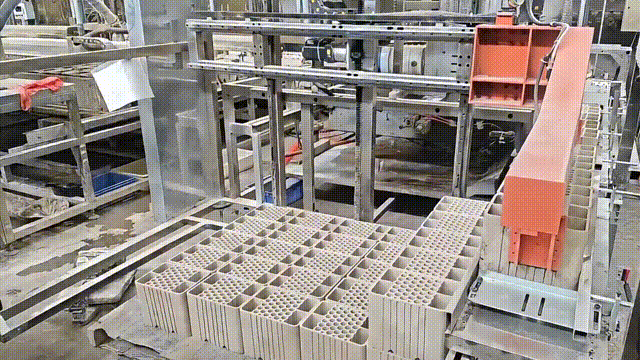
6. Finished Products
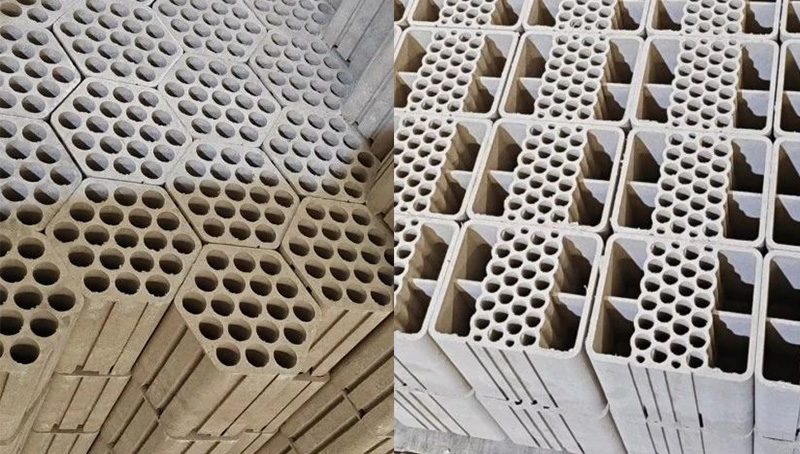
03 Project Screes
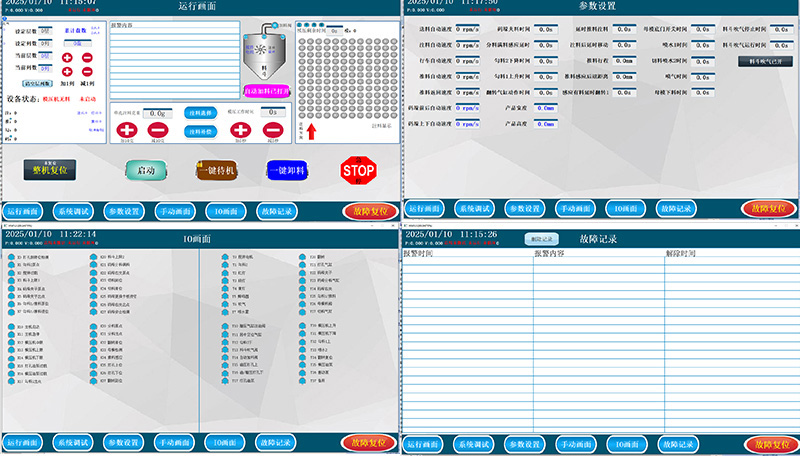
Advantages
1 Improve efficiency
Traditional fireworks production involves multiple steps such as reeling and assembly. This solution integrates these process steps, utilizing a molding press to directly mold the final product, thereby reducing steps and enhancing production efficiency.
2 Reduce labor costs Operators only need to set basic parameters, and the equipment runs automatically. One worker can manage multiple equipment at the same time, which reduces labor intensity and labor cost.
3 Improve quality
The solution adopts bus automation control, which can realize accurate parameter adjustment and real-time monitoring in each production link, ensuring the consistency and high precision of finished products.
4 Device maintenance
The solution adopts bus servo wiring design, the equipment structure is simple, the circuit layout is reasonable. It is convenient for the maintenance of the equipment. Critical parts are easy to replace, reducing the difficulty of repairs and reducing downtime.
5 Increase production flexibility
Equipped with a remote HMI, operators can monitor and control device at any time, deal with unexpected problems in time, and improve production flexibility and response speed.
6 Adapt to multiple production needs
This solution can be flexibly configured according to different fireworks production needs, and supports the molding processing of various mud materials and finished products. Whether it is mass production or customization in batch, the equipment can be quickly adjusted and ensure stable production.